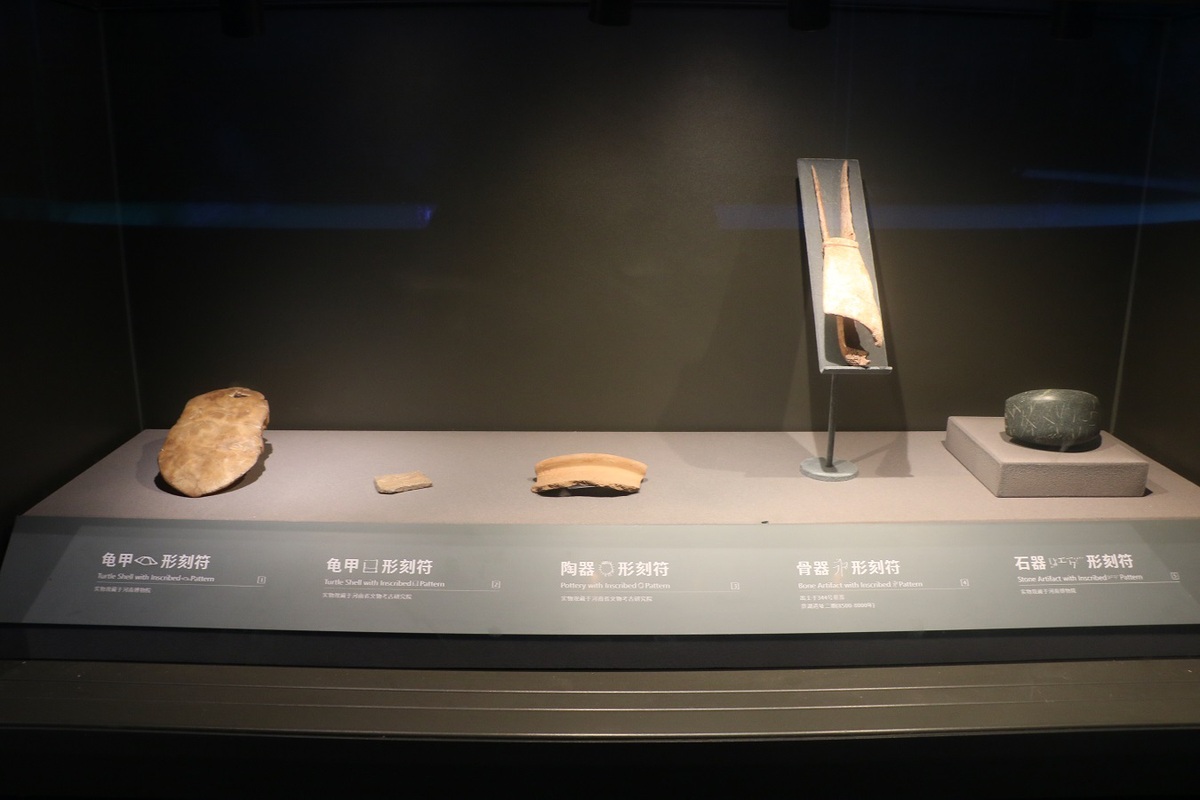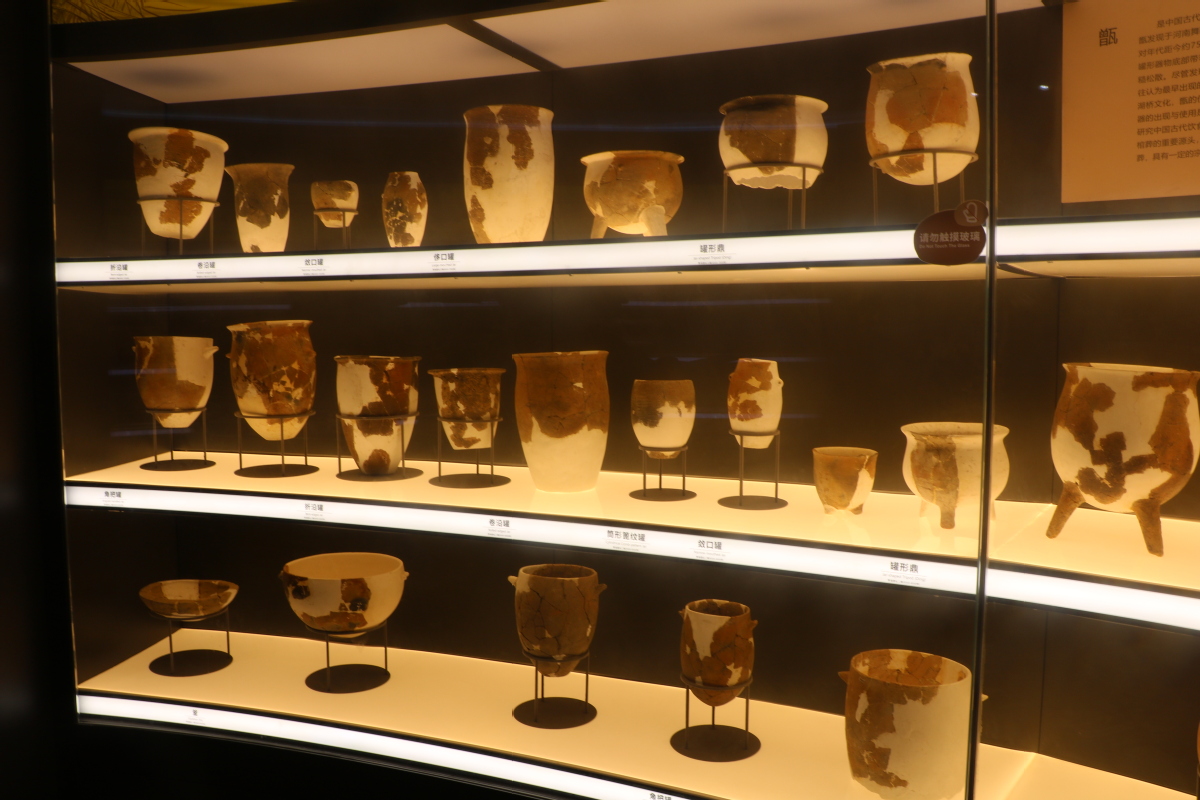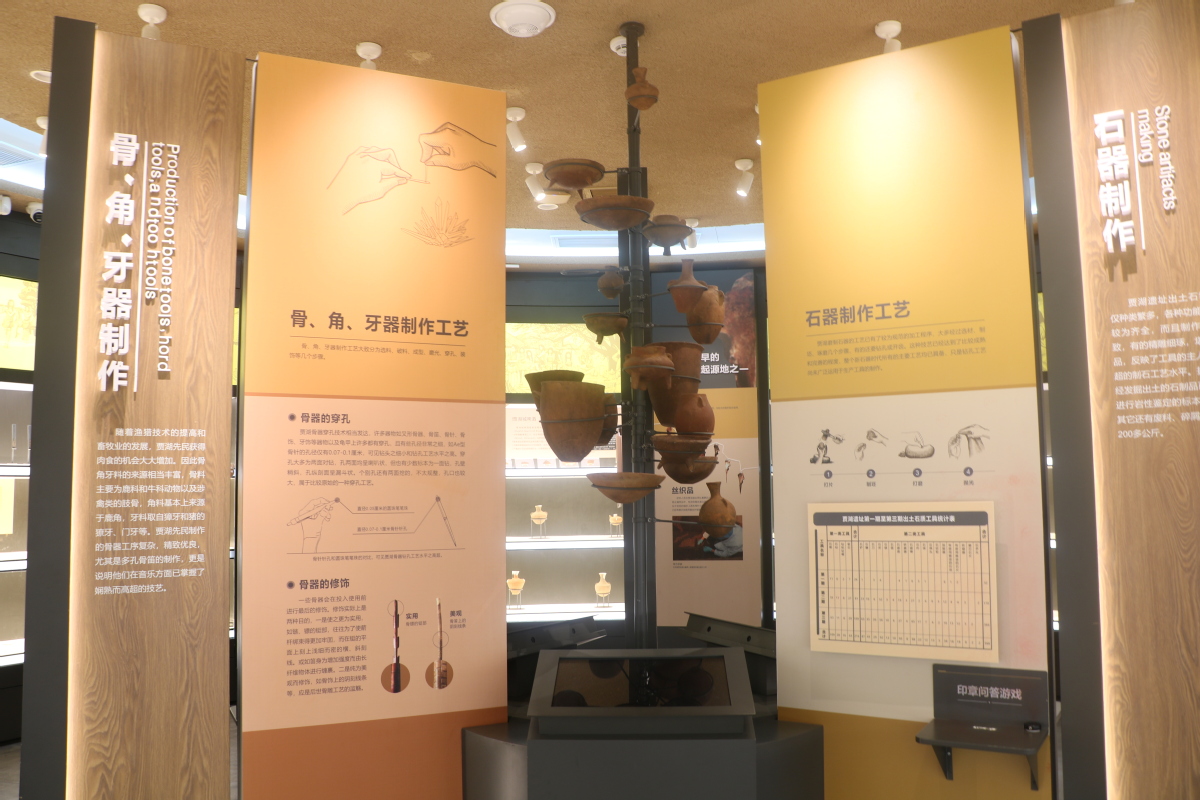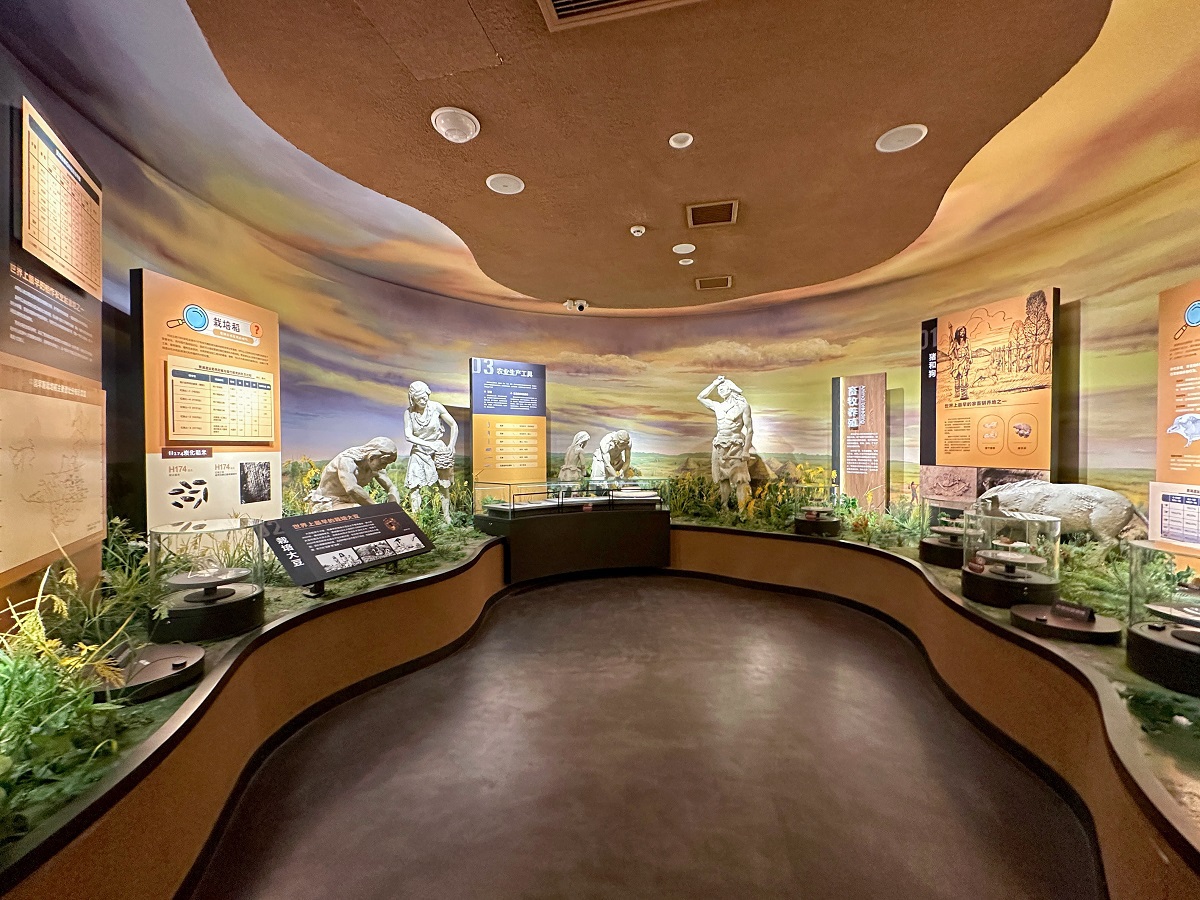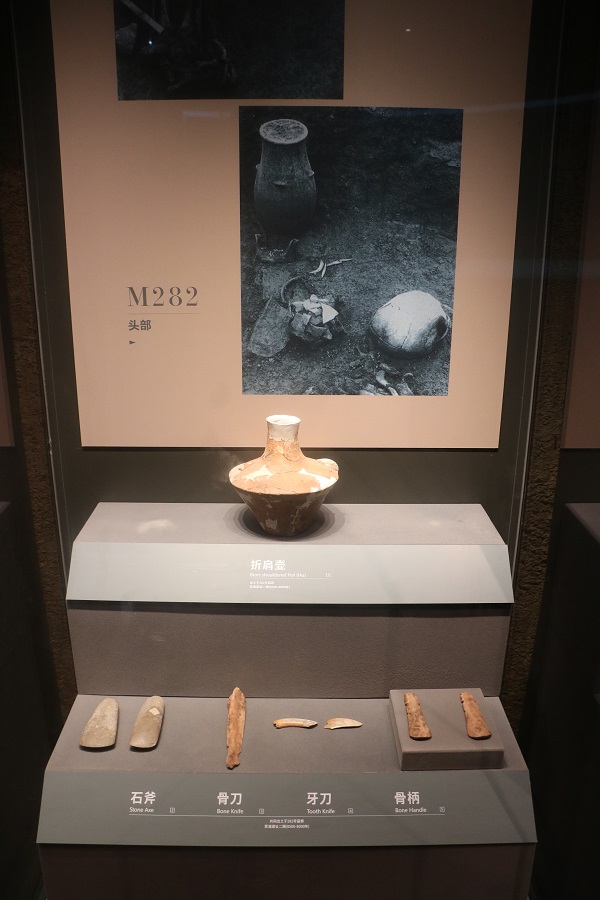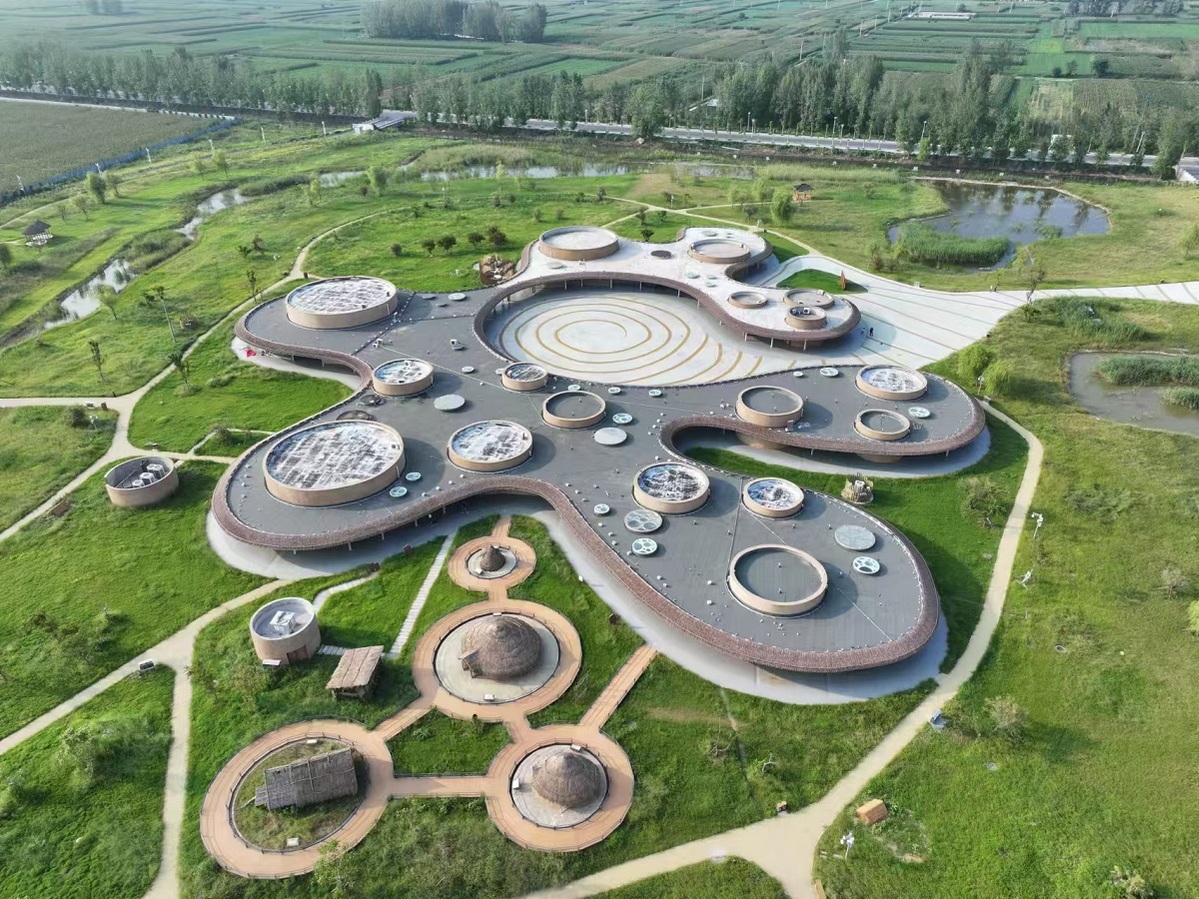
In Beiwudu township of north Wuyang county, Central China's Henan province, lies a hidden Neolithic site, the Jiahu site.
Through eight archaeological excavations, this site has unveiled a wealth of Neolithic relics, including houses, kilns, ash pits, tombs, pot graves, and animal pits. More than 6,000 artifacts crafted from materials such as pottery, stone, bone, horn, teeth, and shell have been unearthed, alongside a trove of plant and animal remains.
These findings vividly illustrate that the ancestors of Jiahu had entered into a highly developed civilization characterized by plow agriculture, gathering, and hunting, fostering an early Neolithic culture, including rice cultivation, music, religion, and brewing.
Photo taken on Aug 19, 2024, shows an ancient Jiahu bone flute at the Jiahu Site Museum, in Wuyang county, Central China's Henan province. [Photo by Yang Yanchang/For chinadaily.com.cn]
Among the remarkable discoveries at this site are bone flutes meticulously crafted from the tibia of the red-crowned crane, marking the earliest known seven-note musical instruments in the world and reshaping the narratives of Chinese and global music history.
Furthermore, Jiahu stands as one of the earliest hubs of wine production. Through the analysis of pottery remains, experts have determined that the Jiahu people had mastered the oldest brewing techniques 9,000 years ago, surpassing the record set by ancient Persia by 1,600 years.
Recognized as one of China's top 100 archaeological finds of the 20th century, the Jiahu Site offers visitors a profound bond to the wisdom and ingenuity of their ancestors from millennia past, inviting them to immerse themselves in the enchanting allure of Neolithic civilization.


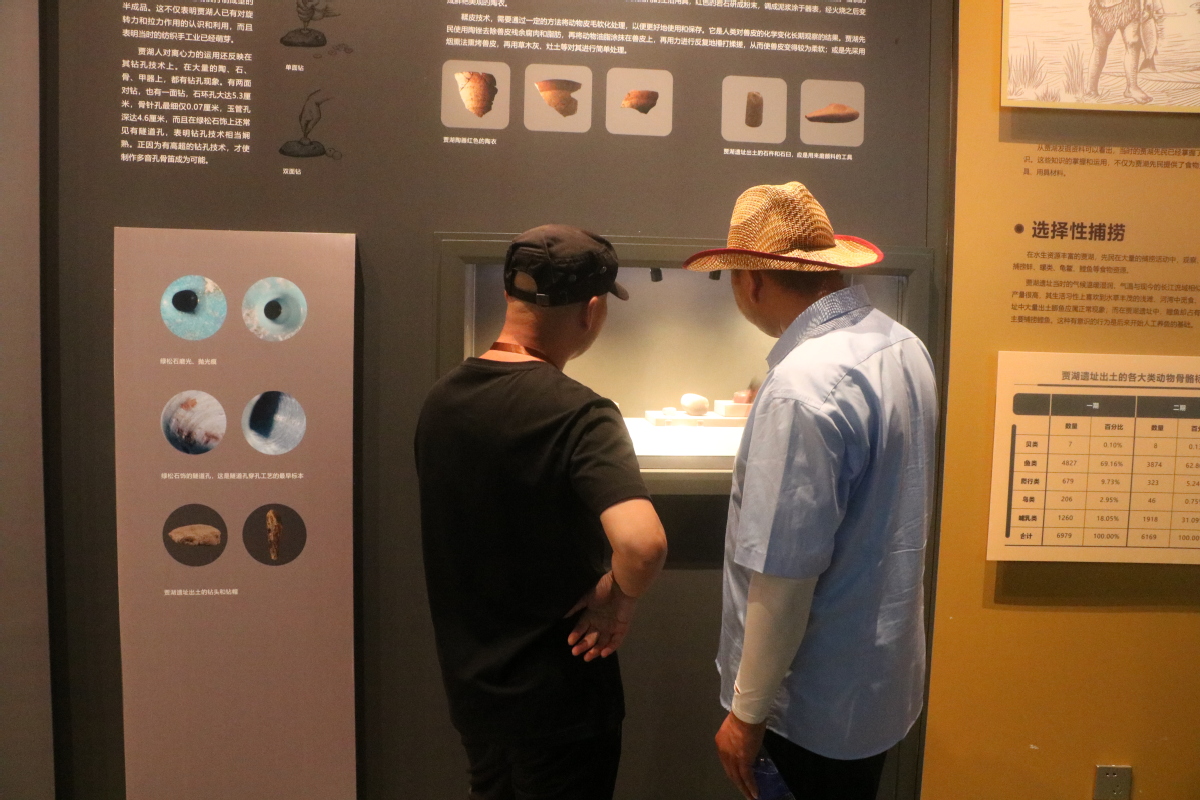
Articles of daily use of the Jiahu people are displayed at the Jiahu Site Museum, in Wuyang county, Central China's Henan province, Aug 19, 2024. [Photo by Dong Senhe/chinadaily.com.cn]
